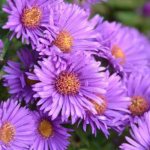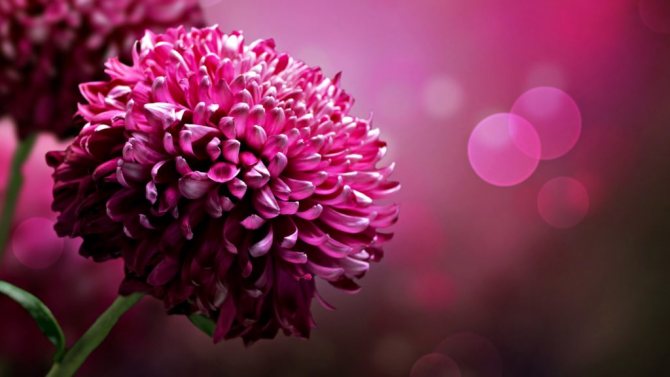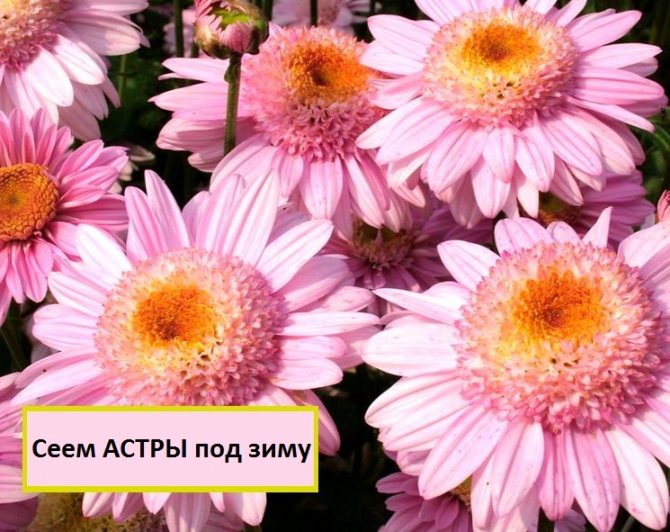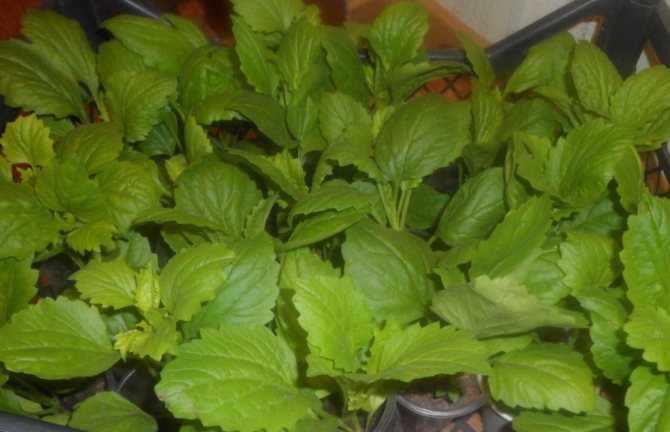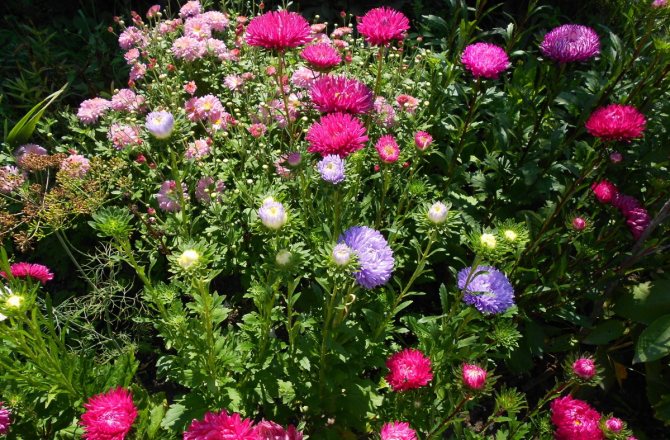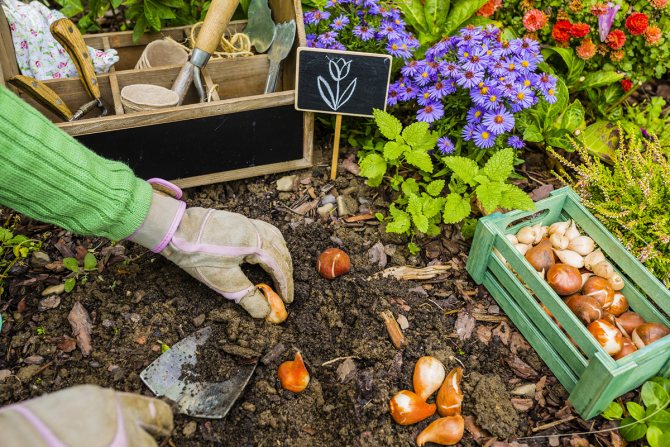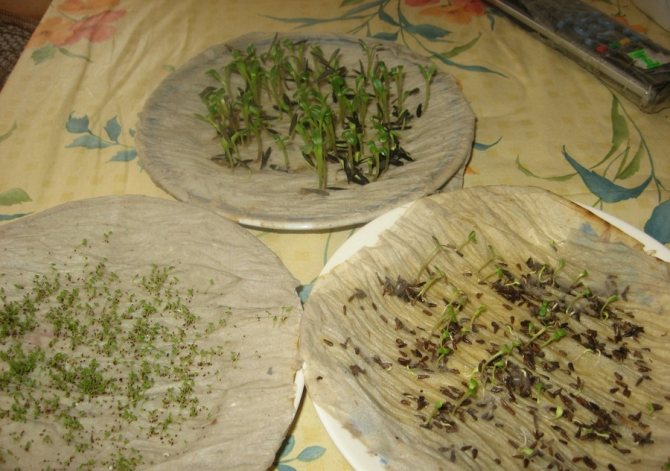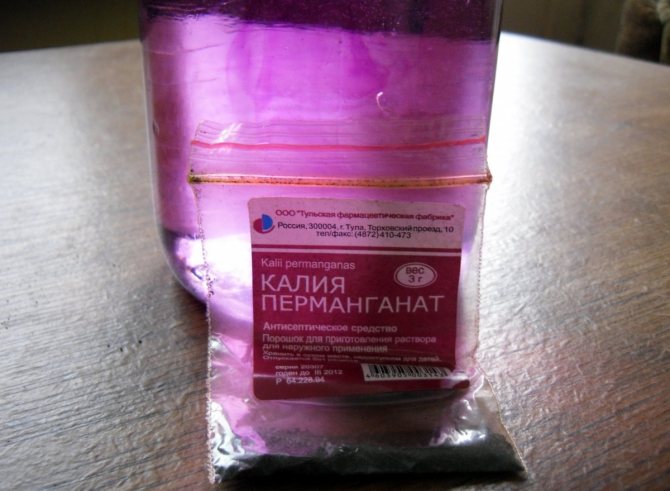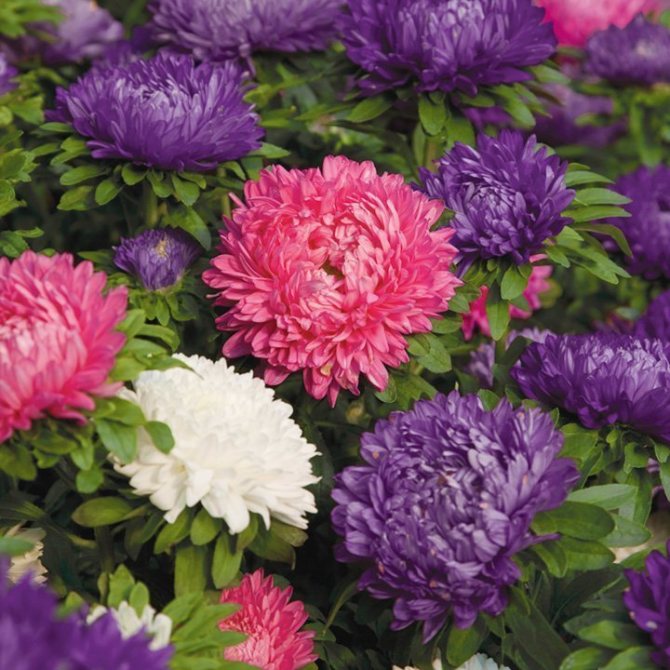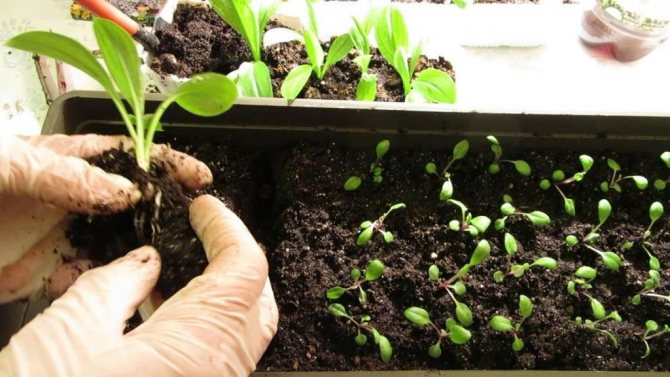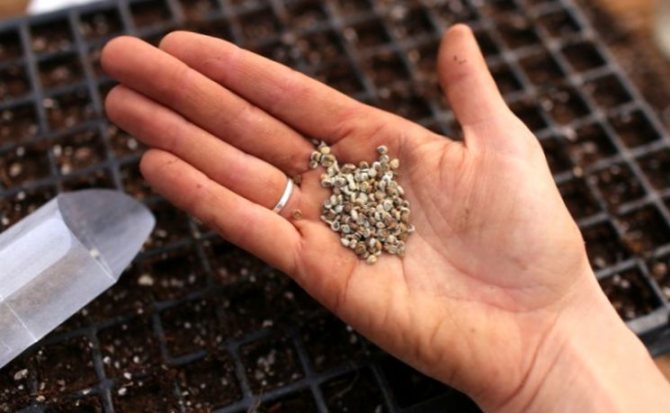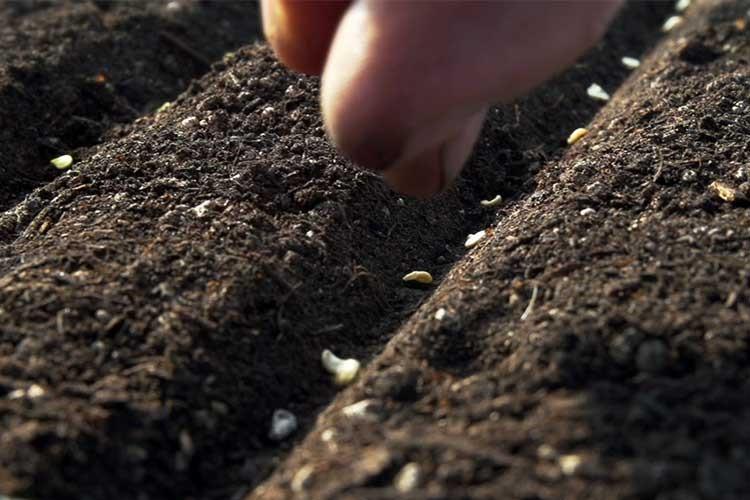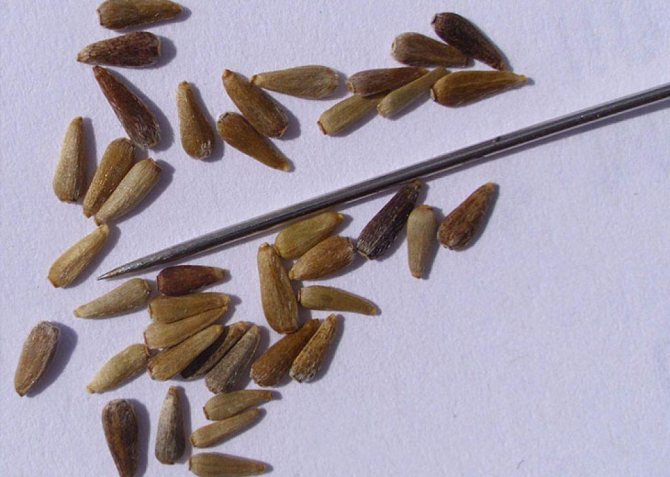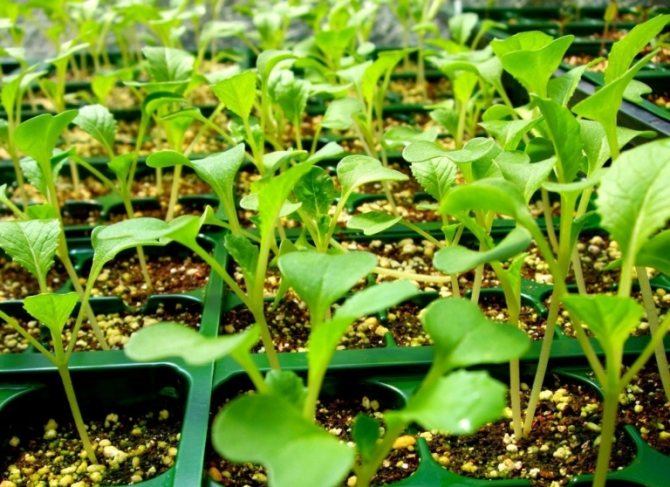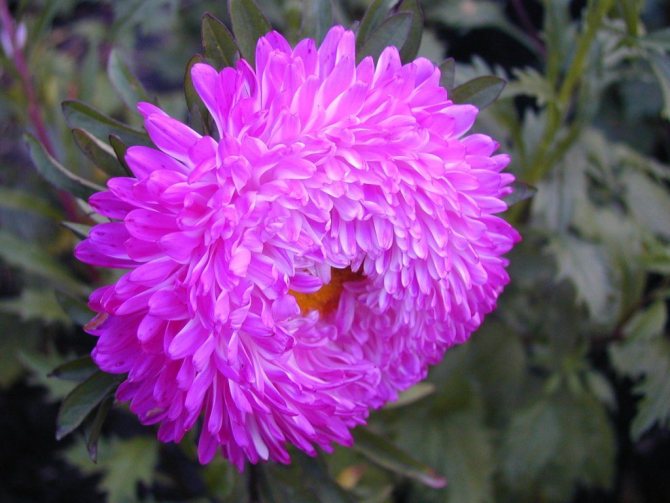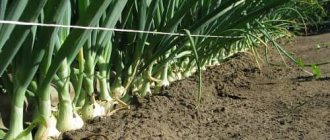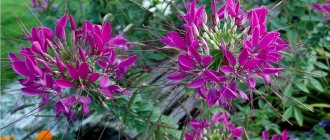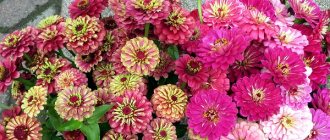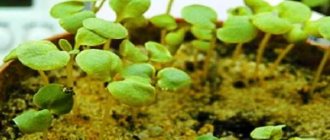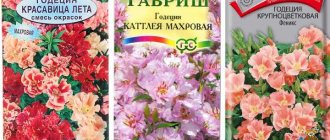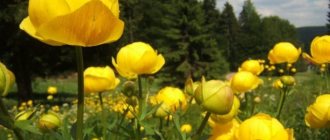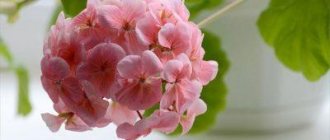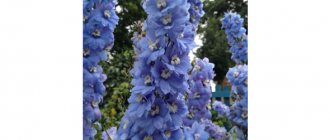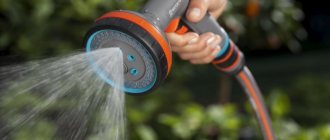Gardeners are very fond of aster, so it can be found in almost every summer cottage. This popularity is due to the simplicity of growing this plant, which even a beginner can handle.
However, not everyone knows that in order to obtain high-quality seed material, it is necessary not only to correctly collect the seeds, but also to take proper care of the plant throughout the entire period of growing the crop. This is especially true for those who plant flowers in the northern regions, where short summers prevail. Let's look at how to collect aster seeds and get beautiful flowers.
Selection of quality seeds
This is the first and most important task of every grower who does not know how to grow these flowers. The health of the plant, its effectiveness and decorativeness depends on this. Even an experienced gardener, due to the large number of aster varieties, will have a wide eye. Therefore, before purchasing seeds it is important to pay attention to such characteristics, as the shape of the bush and inflorescences, the height of the flower, the month of flowering, the splendor of the inflorescences, the color of the flowers, the purpose of growing asters.
If aster seeds are not collected independently, but are purchased in a store, it is better to give preference to the manufacturer who has indicated as much information about the seeds as possible. The same information should be carefully read. The variety of asters must be chosen depending on the place where they will grow and the purpose of growing.
In order to green the edges of garden paths, flower beds, they prefer dwarf, double or needle-like species... Any color scheme can be used. For cutting (for sale or just for those who like to arrange bouquets), medium-sized and tall varieties of flowers are suitable. Planting such flowers in groups will be especially effective.
Be sure to pay attention to the shelf life of aster seeds. It is not recommended to purchase planting material that was harvested more than a year ago, since there is a risk that germination will not please.
Growing features
First of all, you need to decide on the place where the flower will be in the flowerbed, and what plants will be located next to it. As a rule, shorter varieties are planted in the foreground, and higher varieties are chosen in the background. In this case, the plants will not overshadow each other and will be able to receive the normal amount of light.

First of all, you should not grow these flowers in the same place every year, as in this case they run the risk of contracting fungal diseases. It is also not recommended to plant a crop in the soil where tomatoes, potatoes, gladioli and carnations previously grew.
If manure is used as a fertilizer for plants, then it can be affected by a black leg. In addition, such dressings can provoke brown root rot. Therefore, it is periodically necessary to carry out preventive measures. Soil disinfection is best suited for this. It is recommended to remove the diseased plant.
Growing from seed, when to plant and how
- Decide on sowing time... It is recommended to grow asters in seedlings. The sowing time of seeds depends on the variety of the selected flowers: late, medium flowering, early. Accordingly, from the time of planting to flowering, an average of 90 to 130 days pass.It is important to correctly calculate the sowing time in order to enjoy flowering longer and to collect quality seeds in a timely manner. Taking into account the terrain and variety of asters, sowing seedlings should be carried out in early March – April.
- Ensure normal temperature conditions... The best place for growing can be a window sill, and the most optimal temperature is + 23-25 ° С. For planting, you will need a special planting container, high-quality nutritious soil and a film, with the help of which a greenhouse effect will be created for young aster seedlings.
- Soil preparation... You can buy it at a flower shop or make your own. You can do this in the fall. To do this, you need to take humus, earth and sand in equal proportions. You can add some ash. To protect young and fragile seedlings from pests, it is better to neutralize the soil with a solution of potassium permanganate or phytosporin. Fill the prepared soil in a container and let it settle, pour water over it.
- Correct sowing... Spread the seeds in rows, then sprinkle them on top with earth, the layer of which should be about 1.5-2 cm. After sowing, the containers are covered with foil and placed on the windowsill.
- Aster seedling care... Already after 7-9 days, the first shoots appear, and after 12-16 days - the first leaves. It is during this period that it is necessary to pick the seedlings into other containers. When transplanting, it is important not to damage the seedlings and keep the distance between the plants at least 4-5 cm. Water the aster seedlings as the soil dries, and in order to get healthy asters, it is better to start hardening them after transplanting.
How to choose seeds
Not all novice gardeners know how to choose the right seed material so that full-fledged plants grow from it. However, this is very important to consider before harvesting aster seeds in the fall.
Strong and beautiful flowers are selected for the collection of seeds. They can be marked with a ribbon and cut off after flowering. Dried petals can not be cut off from the core, but the whole flower can be saved in a cardboard box. But for this it must be absolutely dry.
The quality of the seed, of course, depends on whether it is damaged by parasites during the winter storage period. Therefore, when talking about how to collect aster seeds, you should definitely consider this nuance.
Features of transplanting into open ground
When to plant asters? After about 1.5 months, when 5-6 small leaves appear on the seedlings, and the stem is at least 5 cm, the seedlings can be planted in open ground. At the same time, take into account the weather outside - there should be no frost anymore.
A place for growing asters
Plant transplant
How to care for asters after transplant
- The amount of moisture. Moderation is important in this matter. Abundant watering is needed only during severe drought. It is advisable to water in the evening or in the morning. Stagnant water, as well as severe drought, will lead to the death of the flower. Watering should be especially monitored during the period of bud formation.
- Plant feeding. Fertilization is optional, but growers notice stronger plants and lush flowering after applying nutrient mixtures. For those who wish to "reinforce" their flowers, the first feeding should be done 2 weeks after transplanting, when the seedlings have already taken root. It is better to do this with either special mineral fertilizers or ash infusion. The second feeding is during flowering. This time superphosphate is suitable, but it is better not to use ammonium nitrate.
- For tall asters, carry out hilling, which will give them stability and additional nutrition. On the site, carry out timely loosening and weed removal. As mulching, you can use grass, chopped bark, sawdust.
- In order for the plant to bloom longer and start up additional shoots, you can remove the tops of the shoots and remove the inflorescences that have faded in time.
- After all the flowers have faded, the dried plants are removed from the garden.You need to dig up the site and apply fertilizer for the next season. If there are perennial asters on the site, then it is better to cut them a little and insulate them with foliage.
- It is possible to collect seeds for further cultivation only in dry weather, and only from plants that have not been affected by pests. The inflorescences should also be dry. Store them in well-sealed paper bags. If stored at room temperature, the shelf life is no more than 1 year. If the temperature is not higher than 5 ° C, then germination can persist for up to 2 years.
Features of storing aster seeds
First of all, it is necessary to collect extremely dry and healthy seeds. If there is a darkened shell on them or the peel is covered with a light fluff, then it is better not to use such material.
Before you put the seeds for storage, you must additionally dry them by spreading them out on a dry cotton cloth or paper. However, it is not recommended to expose the seed to open sunlight. Storage should be carried out in a dark room with a relative humidity of no more than 55%.
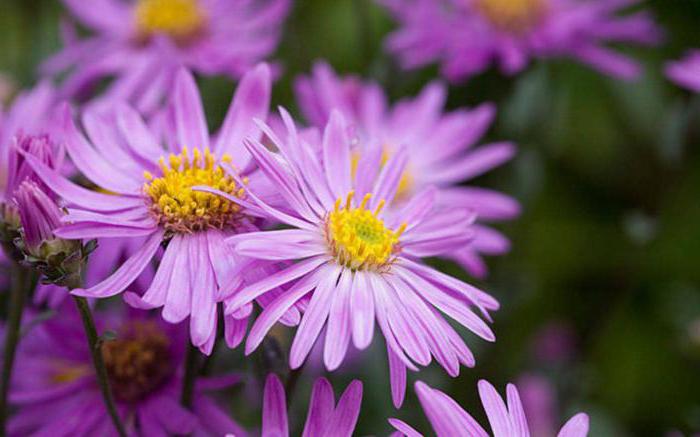

Seed bags should be checked periodically throughout the year to ensure they are free of mold or mildew. If this happens, then the seeds are not recommended for planting.
Recommendations for planting asters outdoors and caring for them
Aster is one of the most common flower crops among Russian gardeners. Planting an aster in the open field will not cause much difficulty even for novice flower growers. Unpretentiousness, easy care of the plant, long flowering make this flower a desirable decoration for any garden.
The homeland of the aster is the Far East, Korea, China. In another way, the annual aster is called Callistephus Chinese. This plant is quite cold-resistant and light-loving enough. The successful cultivation of asters will be ensured by a low air temperature and optimal soil moisture. Astra prefers light soil, with weak acidity.
When preparing the soil for planting asters during autumn digging, you can add humus or compost. In no case should manure be fertilized, its introduction contributes to the infection of plants with fusarium!
Aster varieties differ in the size of the flower baskets and the height of the stems. Tall varieties are good for cutting into a bouquet, undersized and small-flowered varieties will perfectly decorate flower beds and lawns. You can also plant asters on balconies and loggias.
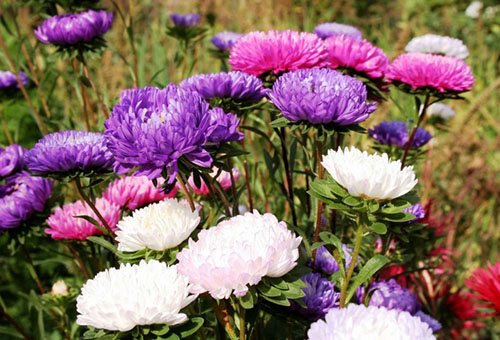

Seedling method
Using the method helps to get flowering plants much earlier. With proper care, the flower beds are especially colorful. This method is often chosen by summer residents who want the plants to bloom early.
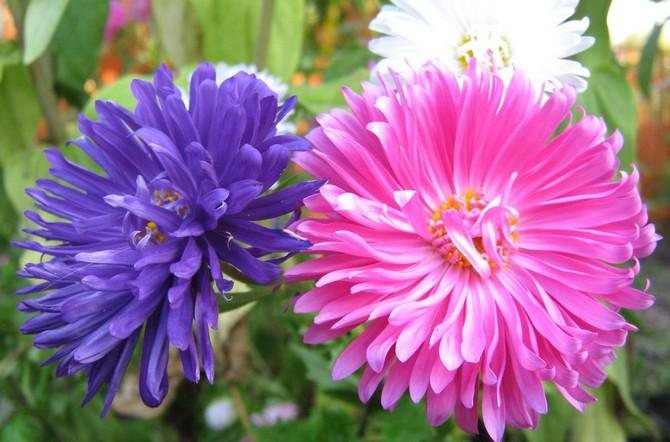

Dates of sowing seeds for seedlings
The summer resident determines the period independently, depending on the growing region. Approximate planting date: late March - early April. It should be remembered that it is necessary to transplant seedlings into the ground by mid-May.
Planting material processing
For disinfection, the seeds are kept for 30 minutes. in a weak solution of potassium permanganate. To speed up the sprouting of sprouts, they are soaked in growth stimulants purchased in stores.
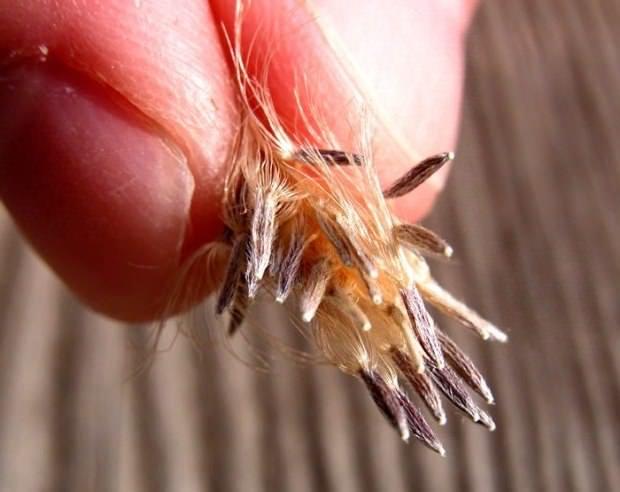

Soil for asters
Flowers prefer fertile soil, before digging, they bring in:
- compost;
- humus;
- wood ash;
- dolomite flour.
What kind of soil asters like is easy to understand, it is important to protect the flower bed from waterlogging and weeds. For seedlings, a soil is prepared that allows moisture and air to pass through well. For better watering, a drainage layer must be formed at the bottom of the containers.
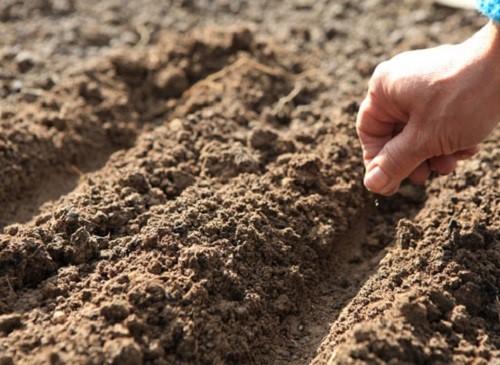

Sowing seeds
Sowing depth 0.5-1 cm. Watered with warm water. Then it is tightened with polyethylene and placed in a warm, dark place. After the sprouts appear, the film is removed and the pots with plantings are placed on the window.
See also
16 varieties and types of badan with a description, planting and care rulesRead
Temperature control and lighting
The culture loves sunlight, the more daylight hours, the stronger the seedlings of flowers. The air temperature is not higher than +18 ⁰С.
Watering seedlings
Use only warm water. The first time, 7-10 days, is watered by spraying. Moisten with a spray bottle, so the roots are not washed out. Water as the top layer of the soil dries out. Without flooding or waterlogging the soil.
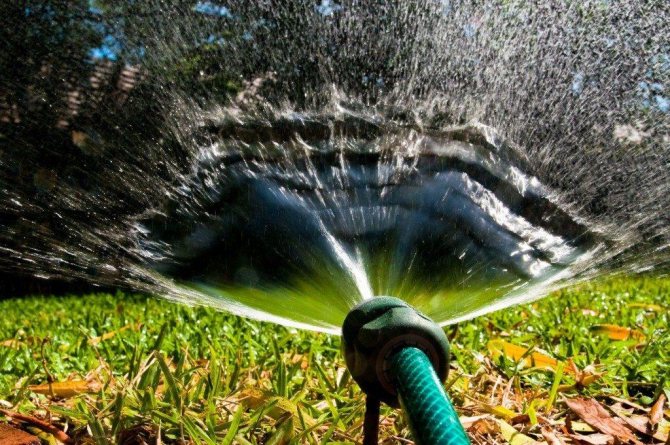

Plant picking
Produced at will. Some summer residents do not recommend touching the plants. They feel good in the group and grow well. But if time and place permits, then after the appearance of the second leaf, they are transplanted into separate containers.
Hardening
An obligatory process before planting seedlings in open ground. Plants need to be prepared for growing conditions. Therefore, a week in advance, the containers are taken out to the balcony or outside for 10-15 minutes. The next day, increase the time. Then it is brought up to 10 o'clock. And the last day is left for the night.


Planting seedlings in open ground
The final stage of planting. The transfer to a permanent place is carried out in mid-May. When the shoots have reached a size of 10-12 cm. It is recommended to do this in the evening to reduce the stress on the plants.
The planting scheme depends on the variety of asters:
- tall 30-40 cm;
- undersized 20 cm.
This arrangement of the bushes helps to create an aesthetic appearance in the flower bed.
Diseases and pests affecting asters
Asters are quite often affected by various viral and fungal diseases, even despite rather careful care. Let's list the most common hazards.
The soil is usually infected with fungi, their reproduction is facilitated by excessive moisture in the soil and high air temperature when growing asters. Annuals get sick more often, the disease manifests itself in the form of dark stripes, and only on one side of the plant. Then the leaves begin to turn yellow, the buds wither, the plant dies.
To combat the disease, you need to lower the acidity of the soil by adding lime to it, spray the flower garden with copper chloroxide, and make sure that there are no aphids.
The fungi that cause this disease are found in any soil. They mainly affect young shoots near the base of the stem, which becomes thinner, blackens, and the plant quickly dies. Acidification and high soil moisture contributes to the spread of the disease.
You can fight the disease by disinfecting equipment and soil with a strong solution of potassium permanganate, removing diseased seedlings, maintaining optimal humidity and careful care.
- Septoria (brown spot).
The causative agents of this disease are localized on plant debris. Rusty or light brown spots appear on the affected leaves, which spoil the appearance of the plant. Sick leaves dry up and fall off. Fungi actively reproduce at temperatures of 23-25 ° C and high humidity.
Advice
To get quality seeds, you need to know some of the intricacies of caring for asters. It is recommended to plant plants in a fairly sunny place where the soil is light. During the summer season, you need to feed the plants at least 3 times. As a rule, fertilization is done immediately after planting, after the buds appear and when they begin to bloom.
If you treat the bushes with a 1% solution of potassium permanganate, then this will help protect them from the attacks of aphids and spider mites.
Description of colors
It is not for nothing that the Greeks called the aster a star. Flowers, like shaggy multi-colored stars, light up in the plots and delight gardeners for a long time with their charming appearance.
Astra has the following advantages:
- It is unpretentious, does not require excessive efforts from people during planting and further care.
- Both large and small aster flowers are outwardly attractive, retain their beauty until frost.
- There are many varieties and varieties of asters.
Correct sowing of seed is a guarantee of the appearance of strong shoots on the site and subsequent lush flowering.
Many summer residents prefer to grow asters in a reckless way for several reasons:
- This technique is less laborious.
- The seeds and sprouts that have appeared are hardened in natural conditions and the plants are less sick in the future.
The flowering time of aster varieties is different:
Buds appear through
Perennial and annual - advantages and disadvantages
Usually, aster lovers have in their "arsenal" both annual and perennial varieties. Each of the species has its own "strengths" for which they are so loved.
Perennial asters... The obvious advantages of perennial asters include minimal care: planted once and that's it, periodic watering and rare dressings are enough, and in the spring - to clean the bush from last year's shoots.
In addition, perennial asters bloom until the very frost, enlivening the gray autumn landscapes with paints.


Their "weak" side can be called a more modest flower of discreet beauty, in comparison with the annual "congeners".


Annual asters... These representatives of the Aster family require some trouble with the arrival of spring, especially at the stage of growing seedlings. But this does not in any way affect the number of her admirers: gorgeous flowers of various sizes, colors and "designs", pleasing to the eye until the very frost, compensate for all labor costs.
When to sow asters outdoors
Aster seeds are planted in open ground in spring. Moreover, the growers were divided into 3 groups, deciding on the best sowing time.
Some believe that it is worth landing in a slightly thawed ground. Then cover the ground with a film or covering material.
The second group of summer residents claims that it is better to plant when a stable temperature of +10 degrees Celsius is established.
Still others support the opinion that the early varieties of asters should be sown in mid-March - early April, and later ones - in early May.
Seat preparation
Asters prefer light, fertile soil with an acidity close to neutral. In order for healthy plants to grow and their flowering to begin faster, it is necessary first of all to prepare the planting site.
Experienced gardeners give the following recommendations on this matter:
- The sandy soil is fertilized with compost.
- The clayey place is lightened by the addition of peat and perlite mixed in equal parts.
- Lime is added to the soil with a high pH.
Seed preparation
Garden aster seeds lose their germination within 2-3 years. Therefore, do not open the bags purchased several years ago. It is better to purchase fresh seeds from time-tested firms. This material is of high quality and does not require additional manipulations, it is ready for planting. You need to know and choose varieties that are resistant to diseases and adverse weather conditions.
Self-harvested seeds can contain harmful spores on the surface. The seed is treated with chemicals.
For seed material of some varieties, pre-sowing preparation will be required, including the following stages:
Features of aster sowing
There are several ways to grow this unusual flower. However, experienced gardeners recommend following a few helpful tips. First of all, you need to take into account that the sprouts appear under the influence of temperature contrast, that is, sharp cooling and heating.
At home, it is recommended to first put the seeds in the refrigerator, and then soak them in warm water. If we are talking about a suburban area, then the seeds must be spread out on the surface of the earth and sprinkled with snow at least 1 cm.After that, you can safely go home. When the snow begins to melt, it will pull the seedlings into the soil. In this case, there will be a kind of imitation of the fact that sowing is done in the fall before winter.
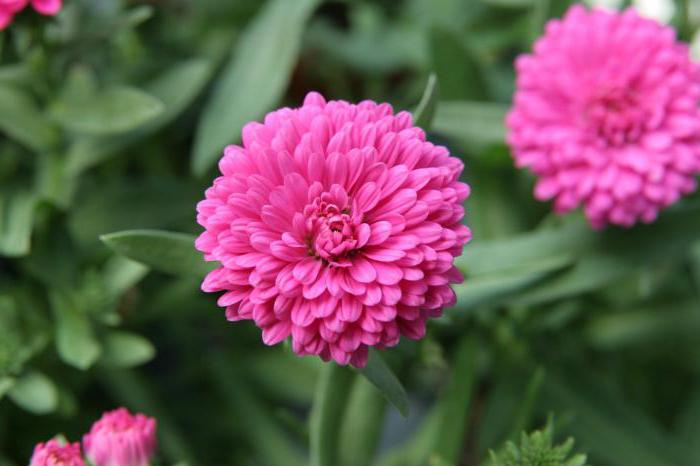

To learn how to properly harvest aster seeds, you first need to clarify how to plant them. At home, you can lay out the seed material on the surface of the ground in pots and put them in the refrigerator overnight. In the daytime, the pots with sprouts are placed in a warm place. This change must be done several times until the seeds hatch. After that, you can dig them in with earth and water them.
Such planting methods are considered the best, since in this case the flowers will be quite strong. Accordingly, it will be possible to collect high-quality seed material from them.
Care after landing
After planting asters with seeds, the emerging plants require regular maintenance. Otherwise, their development will slow down.
With the onset of autumn with prolonged rains, asters are covered with plastic wrap fixed on light frames. This will preserve the beauty of the flowering plants.
After planting, the soil is watered as it dries. Asters do not tolerate excess moisture, but drought also harms them. It is better to occasionally water abundantly.
During the season, it is required to carry out such dressings.
Reproduction
The summer resident wants to increase the number of plants he likes. It is not always possible to purchase seeds from the store financially. Therefore, many people propagate flowers on their own.
Seeds
A proven method of flower propagation. Plants retain all the characteristics of their parents. Even beginners will not have any difficulties. It is enough to collect the planting material and sow it correctly.


Seeds are also purchased in stores. It is desirable from trusted sellers who sell only high-quality planting material.
Cuttings
This method refers to the reproduction of perennial asters. This is done in the spring. After the shoots grow 15-20 cm, they are cut off. The cut must be at an angle of 45⁰. Then the lower leaves are removed and placed in a growth stimulator for several days. Planted in partial shade at an angle, monitor the level of humidity. Without letting dry and not flooding the planting.
By dividing the bush
Gardeners practice this breeding method of perennial asters. In the first place, the bush grows no more than 5-6 years. Then the plantings thicken and the plants lose their attractiveness. This method is the fastest, as the bushes bloom in the same year. The bush is dug up and, using a shovel or knife, it is divided into parts. In each, at least 5 shoots are left.
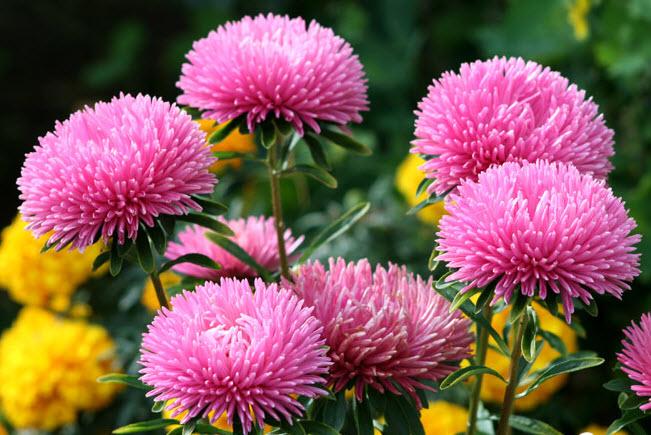

The wells are prepared in advance, the distance depends on the characteristics of the transplanted variety. The higher the mature bushes, the greater the distance.
About flower
In crops with amicably ripening or well-ripening seeds (gypsophila, lobularia, lobelia, nigella, snapdragon, phlox drummond, iberis, cornflower, godetia, clarkia, flax, nemesia, schizanthus, carnation, forget-me-not), as a rule, the whole plant is cut entirely at the moment when most of the seeds are ripe and the capsules or pods began to open. In other species -
Tie a flower with gauze and ripen
The flower bed depends on the growth of flowers, it is indicated on the seed bags. It may or may not correspond, depending on the company. I also try to plant asters separately.
Motley autumn lives with carnivals,
In the twilight, the last lightning will break out
The first step to a successful result is harvesting the seeds. In order for asters to please with lush flowering, high-quality seed is needed. The ideal option is to collect the seeds yourself when cleaning the flower bed. Do not hesitate to ask the neighbors for the variety you like or take up breeding work on your own plot.
In one literary collection I found this beautiful poem and decided to share my mood with you, dear readers. And along the way I want to talk about how to grow asters - not just autumn flowers, but real lush balls of saturated shades.
Adding fertilizer will help the seeds start growing.Many growers add fertilizer when the buds appear, but fertilizing during the seed stage often offers even more benefits as it allows the seed to retain essential nutrients from the start.
Perennial aster species
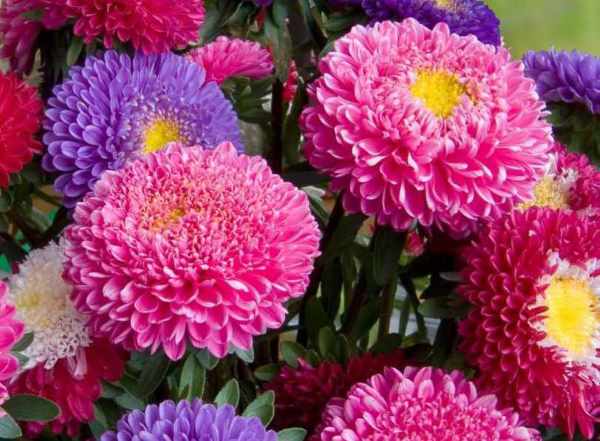

Perennial asters, according to flowering times, are divided into two large groups - early flowering
and
autumn blooming
.
Perennial asters
are represented by the following species: Italian aster, shrub, Alpine, New Belgian, New England.
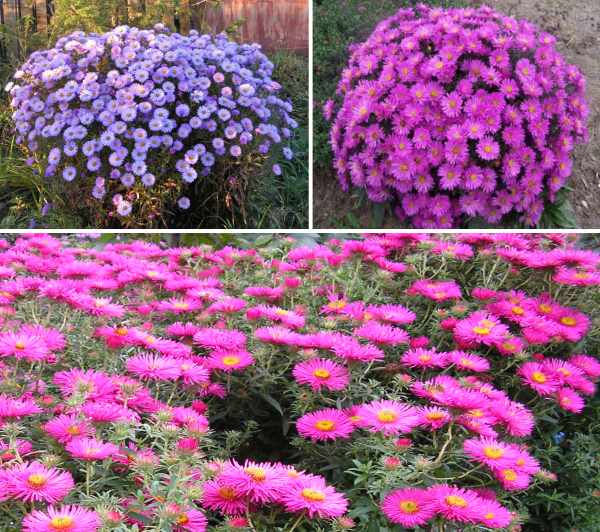

Aster new belgian
- a high bush up to one and a half meters, do not differ in strength, can fall apart. Flowering begins at the end of August and can last until the first snow.


Astra New England
- bushes grow up to 1.5 meters in height, even and slender, do not require a garter. Inflorescences are semi-double, large with various colors: white, pink, lilac, purple, the middle is reddish or yellow. Flowering begins in early September and lasts until the first frost.


Alpine aster
- low-growing plants up to 30 cm high with single inflorescences. The earliest varieties begin to bloom in May, therefore it belongs to the early flowering species.
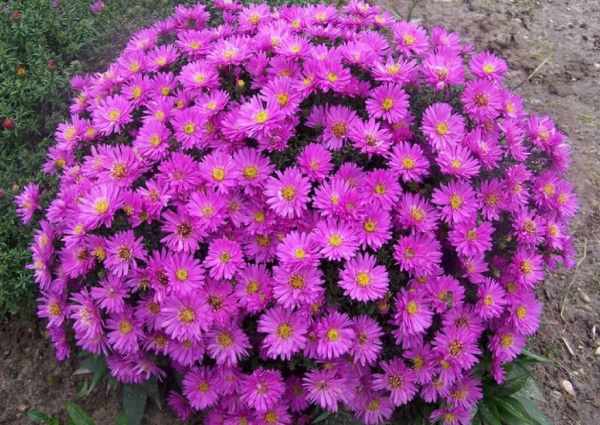

Shrub aster
- bushes up to 60 cm high with highly leafy stems. From the autumn asters, the first to bloom.
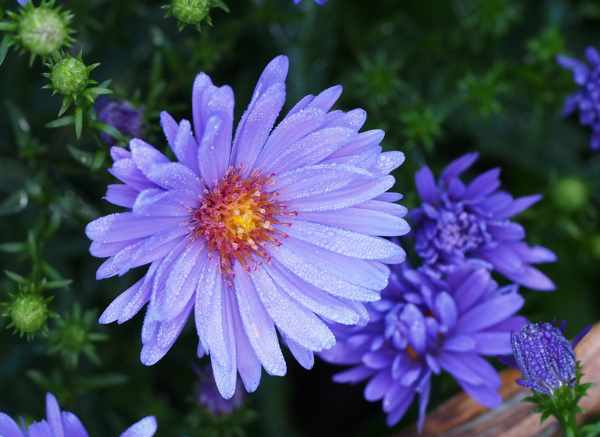

Italian aster
- an early flowering type of asters with large inflorescences up to 5 cm. The height of the bushes is up to 70 cm, flowering begins in June-July. Very suitable for rose gardens and rocky gardens.
Preparatory work before sowing
When preparing for sowing work, the fact of seed germination should be clarified: the maximum will be only from young, last year's. Each subsequent year, the germination rate decreases by 40%. When purchasing seed material, you should definitely pay attention to the year of collection of seeds.
Seed preparation for sowing


Unlike perennial asters, annuals are propagated only by seeds, sowing them either directly into the ground or for seedlings. Whichever way the seeds are sown, they must be of good quality.
Any planting material needs preliminary preparation. The following methods give a good result:
- Germination. This effective way to energize the seed vitality is quite simple.
Seeds are wrapped in a piece of soft tissue and placed in a pale pink manganese solution for a couple of minutes. Then the bundle is removed, lightly wrung out and placed on a plate.
For a whole week, it is necessary to ensure that the fabric does not dry out, systematically moisten it with a spray bottle. After the expiry of the term, the bundle is put into a cellophane bag and put into a room where the temperature is maintained at about + 22 ° C. After a couple of days, the aster seeds are ready for planting.
- Soak. If you apply this method of preparing seeds, then they will be ready for planting in 10 hours. First, a solution of succinic acid or pale pink manganese is prepared. Then the seeds are simply soaked.
The choice of soil mixture


When purchasing soil in a store, you should opt for a composition with a high content of peat. Then coarse calcined sand and ash are added to it.
When self-preparing a soil mixture for seedlings of asters, mix 3 parts of sod land, 1 part of river sand and 2 parts of peat.
The mixed soil must be disinfected for preventive purposes:
- Sprinkle with hot manganese of strong concentration;
- Calcined in the oven.
Having poured the soil mixture into a container for seedlings, it is covered with a thin layer of calcined sand on top. After planting, the seeds themselves are also recommended to be sprinkled with sand to prevent a black leg.
It is recommended to add perlite to the soil mixture to facilitate the absorption of nutrients by the root system.
Astra - the queen of the autumn flower garden
Aster is a whole genus of herbaceous plants that unites a huge number of species. According to botanists, there are about 200 of them.These plants belong to the Asteraceae or Asteraceae family. In this case, the name of the genus comes from the Greek word meaning "star".
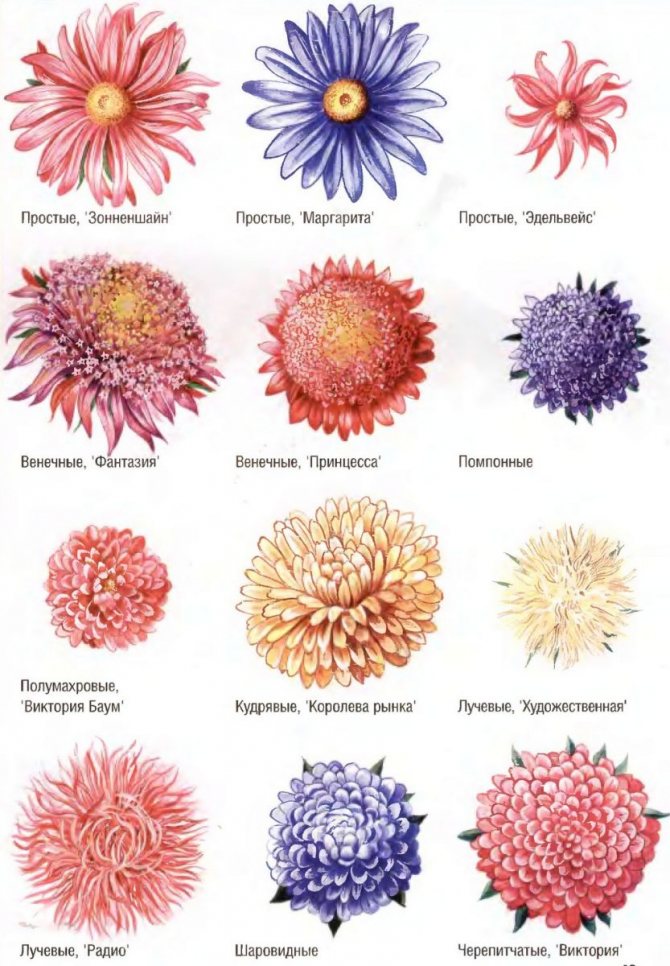

Types of asters
Note! Garden aster, which is most often grown on household plots, was allocated in 1825 as a separate genus Callistephus and is called Chinese Callistephus. Chinese aster, garden aster and annual aster, as well as callistephus are one and the same plant.
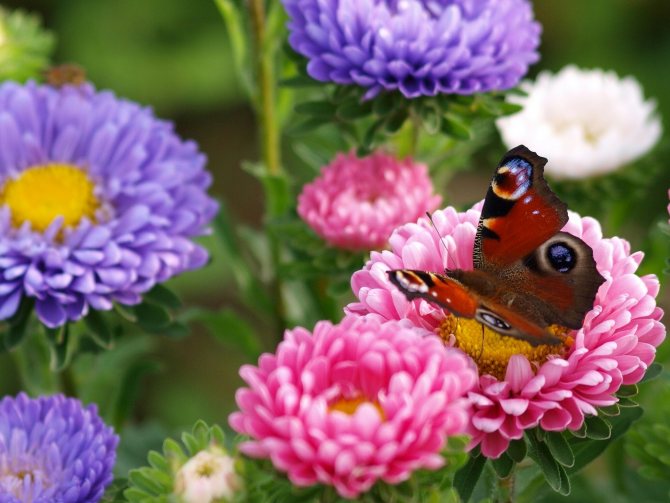

Photo of asters
In the wild, callistephus or garden aster lives in China, Korea, Mongolia. This is an annual with a herbaceous erect green (less often reddish) stem, which gives a lot of shoots and shrubs well. Its height can reach 90 cm. The root system is very powerful, branches widely. Leaves are oval, wide enough, toothed.
Callistephus has become widespread in horticulture due to the fluffy inflorescences-baskets, which have various colors and sometimes reach 10 cm in diameter. Aster does not bloom for long, usually in summer and closer to autumn. Inflorescences can be painted in white, lilac, purple, red and other colors, and the petals (or rather, tubular or ligulate small flowers) can be curly, resembling bird feathers, or straight.
On a note! Aster-callistephus growing in the wild is not as beautiful as those that were bred as a result of the work of breeders. Now there are a large number of varieties and hybrids that differ from each other in the shape, size and color of the inflorescences.
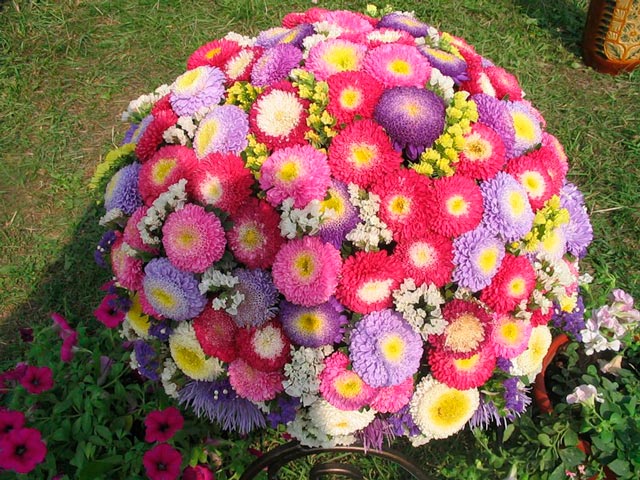

A flower bed of asters
Astra feels great, growing in regions with different climatic conditions. But in cold areas, it will be possible to wait for its flowering, most likely, only by growing its seedlings in winter.
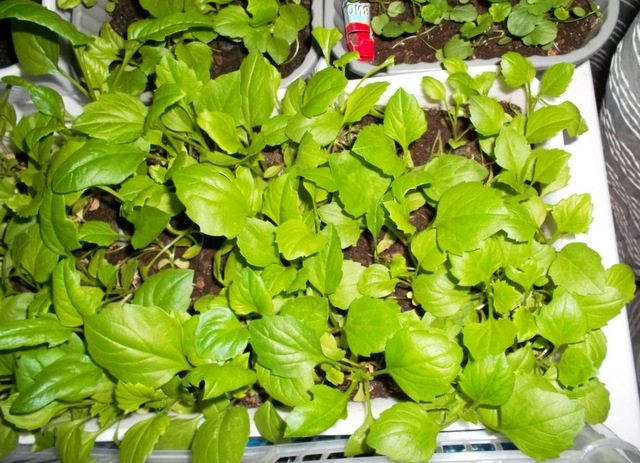

Seedlings of asters
Useful tips for a florist - how to grow healthy and beautiful asters
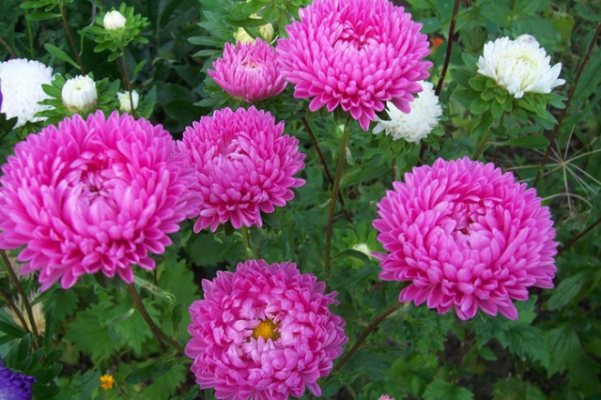

Without observing certain conditions, it is impossible to grow beautiful and healthy asters.
- For example, do not skip the seed dressing step. It won't take you a lot of time, but it will save you from many problems associated with diseases in the future. It is necessary to plant them after such treatment no later than the next day.
- When picking, at the same time, seedlings are culling, removing all painful and weak shoots. There are still a lot of seeds in the package, you will not have a shortage of planting material.
- An important stage of hardening must not be missed. If this is not done, the seedlings of asters will take root worse, they may hurt and will certainly delay flowering.
- Asters are not fed with fresh manure, keep this in mind. Otherwise, instead of benefit, you will get the opposite effect.
- During the rain, varieties with large inflorescences can absorb moisture and lose their decorative effect. It is advisable to provide for their shelter a portable frame, on top of which a film is thrown.
- If the asters are cut in half when they are in full bloom, their life in a vase will last up to 2 weeks. All this time, the flowers will have a fresh look.
Diseases
Considering the intricacies of growing asters from seeds, and when to plant this plant, one must also mention diseases. In addition to fusarium, which is one of the most common diseases of this plant, it is susceptible to blackleg. It is also a fungal disease. The seedling turns black, its root leg rots. Diseased plants are removed, the soil is disinfected.
You need to plant asters away from conifers. Because of them, rust can appear on the back of the leaves. Because of this, they dry out and wither.
Possible problems with seedlings and their solutions
The greatest danger to seedlings is the risk of black leg injury. Previcur or ash solution will help prevent the disease. The development of the disease occurs due to waterlogging during watering, too dense planting.
With stagnant water in the soil, the roots of the aster do not receive the necessary air. As a result, photosynthesis and plant development are suspended.
It happens that plants die, grow poorly or do not sprout at all.The problem may be in poor quality seeds, so re-seeding is recommended. Soak the seeds in aloe juice, change the soil.
Against fusarium, which often affects asters, there is a reliable prophylactic agent - they should not be fertilized with manure.
Incomplete inflorescences form on plants affected by aphids or spider mites.
What to do if the seeds don't sprout
when planting planting material, situations arise when it does not emerge. This happens for the reason that some gardeners make a number of mistakes, including:
- Using seeds that have passed the expiration date... When buying planting material, you need to make sure that it is of high quality. Also, seed germination is affected by improper storage.
- When buying seeds, you must immediately prepare yourself for the fact that the plants that are shown in the picture do not always grow from them.... It is best to purchase products from a trusted manufacturer.
- There are some varieties of asters, the seeds of which must be processed before planting.... It will not be enough to simply dig them into the ground and bury them. Processing involves shell breaking and stratification.
- If, when planting seeds, you forgot to water them or buried them too deep, then they may not sprout. In this case, the planting material will have to be planted again, otherwise it will not be possible to achieve the desired result.
Video - collecting Aster seeds:
How to keep the variety?
Of course. I don’t even understand what difficulties you may have. The ripe flower head can be simply kneaded in the palms, and then the husks can be wiped off in the breeze (the seeds are heavier, they fall down) or try to separate these fractions through a strainer. That's all. And a guarantee that in the next season what you expected will bloom on the flowerbed. With purchased seeds, there is never such confidence.
You can collect seeds from zinnias and marigolds. Choose the largest and most beautiful inflorescences and mark them with a ribbon in order to pick them for seeds in the fall. For more abundant flowering, the remaining faded inflorescences are removed. As for the flower bed, I would advise zinnias in the middle, marigolds around them, since both flowers are mostly warm colors. Asters look better in isolation. You can surround the asters with other low flowers, such as matiola or mignonette or Houston's ageratum.
Lure
In the process of growing from aster seeds, attention should be paid to bait. This is necessary so that the flowering is lush, and the plants become strong and healthy. It is recommended to fertilize the soil three times per season. For the first time, the procedure is carried out 10 days after planting the plants in the ground. For this, a mixture of superphosphates, potassium sulfate, ammonium nitrate is used.
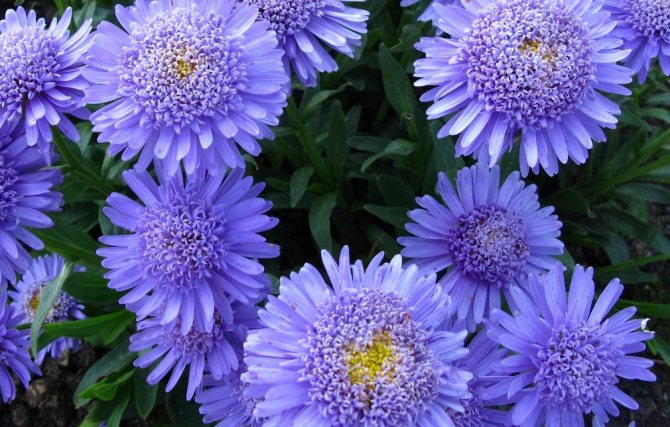

The second time the bait is done when the first buds appear on the plant. The mixture may be the same, but this time ammonium nitrate is excluded from it. The same composition is used to fertilize the soil under the plant for the third time. This should be done at the very beginning of flowering.
If asters began to get sick with fusarium, this may be due to the wrong choice of fertilizer. If manure-based formulations are used for bait, the plant may weaken and begin to hurt. Therefore, the use of such formulations should be avoided.
What asters look like
Asters are very varied in appearance flowers. In this article, we will focus mainly on the annual aster, or Chinese callistefus, as it is correct to call it from the point of view of botany. Since perennial asters are rarely propagated by seeds. Most often, it is customary to propagate them in a variety of vegetative ways: by cuttings, dividing the bush, layering.
But for gardeners, aster is a flower that resembles both chrysanthemum, chamomile, and peony at the same time, their appearance is so diverse. Translated from Latin, the word "aster" means "star".And the flowers that are on straight, rigid peduncles really have the correct symmetrical rounded shape. But otherwise, the variety of their appearance can shock the imagination of any grower.
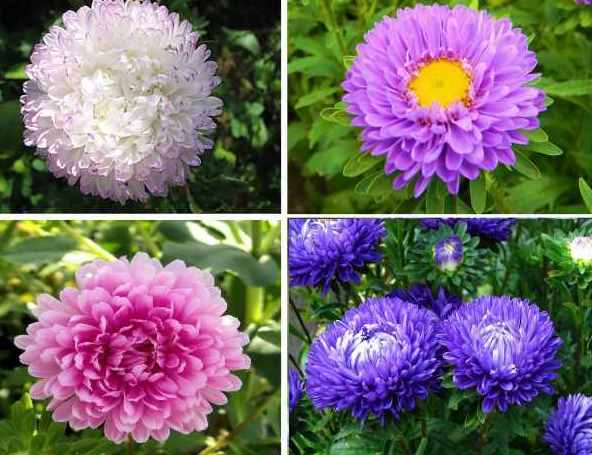

The height of plants and peduncles varies considerably from 20 to 100 cm. Baskets of inflorescences of different varieties of asters can also vary significantly in size, from 2 to 16 cm in diameter. The color of the petals includes a wide variety of shades, from white to blue, deep purple, red and dark yellow. There are varieties with a double color of inflorescences. According to the shape of petals and inflorescences, asters are usually divided into 8 classes:
- simple;
- semi-double;
- coronary;
- curly;
- beam (needle);
- hemispherical (pompom);
- spherical;
- tiled.
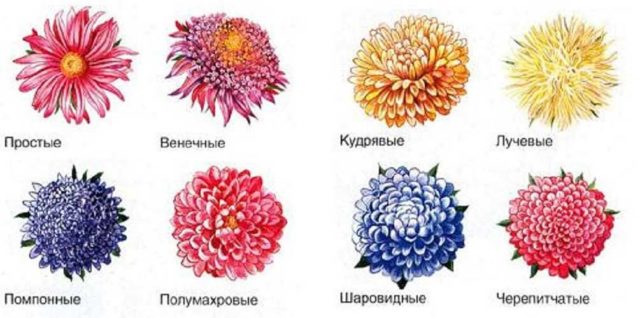

The roots are fibrous, easily growing during transplantation, located mainly in the upper 20-25 cm of the soil layer. The leaves are not too large, in the lower part of the stems - petiolate, on top - sessile. The flowers are usually odorless.
Asters can be used to decorate flower beds, mixborders, flower beds and in mixed plantings with other flowers. But aster, especially its tall species with large inflorescences, is also an excellent flower for cutting. In bouquets, it can last up to 10-12 days.
By the timing of flowering, asters are divided into summer and autumn flowering. The earliest varieties form the first buds already on the 80-90 day of the growing season. They can bloom from early to mid July. And the flowering period lasts until September.
Comment! On average, the duration of asters flowering in the open field is from 35 to 60 days.
Later bloom on 110 days and up to 130 days from the moment of germination. They can bloom until late autumn, since aster plants, being cold-resistant, tolerate frosts down to -5-7 ° C. Late varieties of asters are usually distinguished by the largest inflorescences and bright colors.
At the moment, more than 4000 varieties are known in the world. But in modern floriculture, only about 200 varieties are especially popular.
Some varieties and varieties of flowers
The inimitable beauty of flowers, a variety of colors, a variety of shapes of flower baskets is the real reason for such a love of flower growers for asters. It is simply impossible to tell about all varieties and varieties of flowers in one article. Below in the photo you can see some of the brightest representatives of the Astrov family.
Big chrysanthemum blue


Royal apple blossom


Giant rays, mix


Pompon, Blue moon (presented in several colors)


Peach bouquet
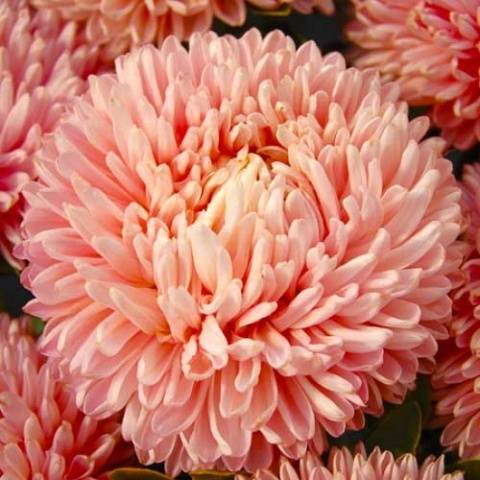

Spiked, pink-cream Naina
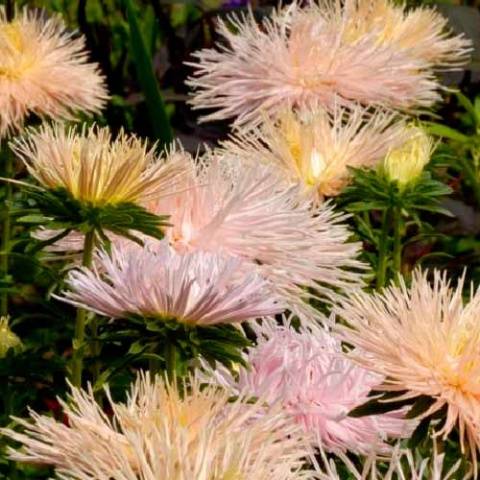

Needle-clawed Juvel Amethyst
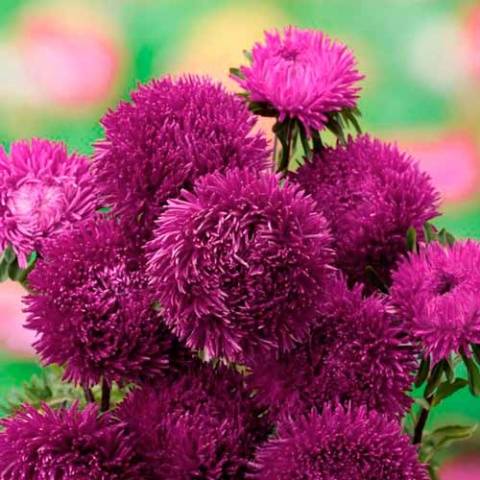

New Belgian Astra White
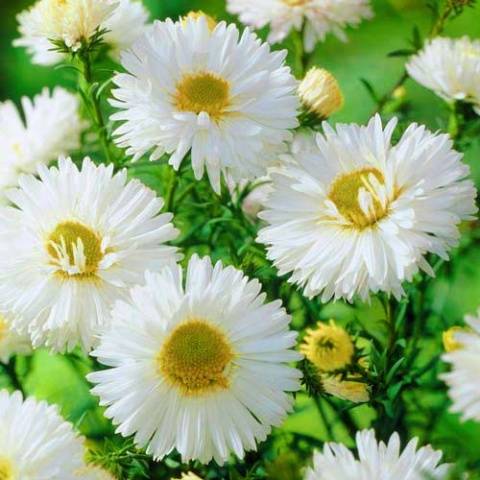

Blueberry pampushka
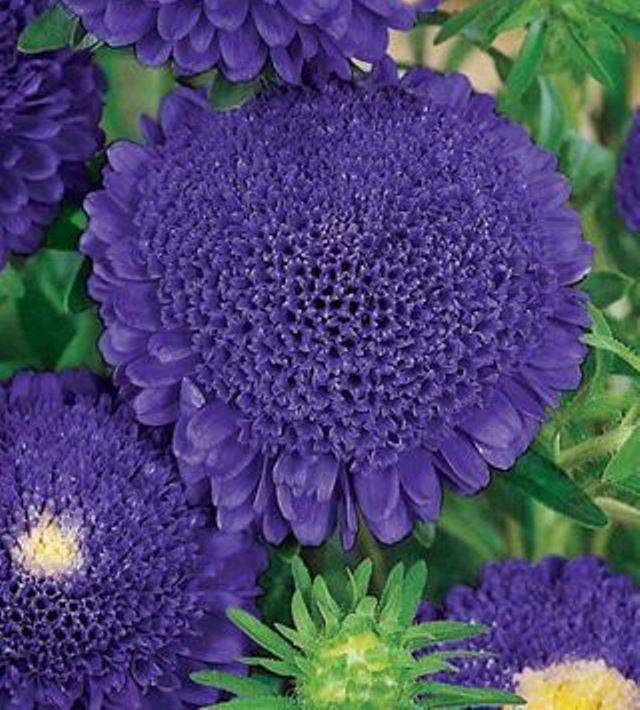

Blueberry pampushka


And what are such magnificent varieties as "Pampushka, strawberry with cream", a series of varieties of different colors "Russian size", a series "Dragon Select", "Gray Lady", "Black Diamond", "Merlin" and many others! These inimitable flowers will transform your flower garden into a garden of paradise.
Seedling picking
As soon as real leaves appear on the asters, the seedlings dive. Among the grown small plants, choose the weaker and more elongated ones. They are transplanted into separate pots. The soil in pots for transplanting seedlings should not differ from that in which they were grown. But you can add mineral fertilizers in the right proportion. Mix the soil in the pots well, spill with potassium permanganate.
Transplant the plants into separate peat cassettes or pots. Make a hole in the center and plant a seedling in it, deepening it 1 cm from the cotyledon leaves. If the aster has a long root system, then pinch it.
Press the soil around and compact so that it does not wash away with water. Seedlings should be carefully watered from the periphery to the center of the pot. Make sure that no water gets on the aster leaves. Place the pots in a bright and warm place at +20 degrees.
By the way, if the seeds do not germinate well or quickly wither and die, then plant again, do not waste time. For starters, it is worth checking the expiration date of purchased seeds. It may be better to change supplier or store.
about flowers - see the question inside
BERGENIA
Aster
Kitty
Will fade, dry up, rip off and you can put it on paper, let it dry up. and then destroy the cap with your hand.
Elena Orlova
I do not make separate flower beds of their annuals, I plant them with perennials. And if you just want a flowerbed with these flowers, plant them in circles or stripes, or islands, focusing on the height of an adult plant (indicated on the bag). Well, the color would be nice to take into account, otherwise there will be a gypsy skirt: pink with orange.
Hope
Asters are purple, yellow, red ...
Dina
The first feeding is carried out a week after the dissection. Further, this procedure should become regular. When planting asters for seedlings, a complex fertilizer is used for these purposes, which can be purchased at the store.
Natalia Cherkasova
So, we already have quality seeds. Growing aster seedlings should be started in the spring. We begin to sow seeds in the soil when the sun is already warming well outside the window - in the last decade of March or early April.
Roza Zueva
Asters are unpretentious, do not require special care, they grow on absolutely any type of soil. And the most important advantage is that they delight with lush flowering for a long time. In such a nomination as garden asters, they can compete only with chrysanthemums. But it is the "autumn star" that captivates with its simplicity. To me, this plant reminds me of a young girl, naive and meek, whose face now and then flashes a blush.
droplet
Asters bloom in June, but can also bloom in early autumn. Regardless of their flowering time, they bloom for about a month.
Marina Nikolaeva
Most flower lovers grow asters through seedlings, but they can also be planted in the ground.
Larissa
We blow daisies
Tatiana Vasilievna
,
Larica cemenowna
On your last visit to the dacha, before the snow falls, pull out the aster bush along with the roots and hang them in the house with the roots up above the newspaper ... the seeds will ripen and fall out on their own. ... with self-seeding, it is likely that the flowers will not be double. but simple

